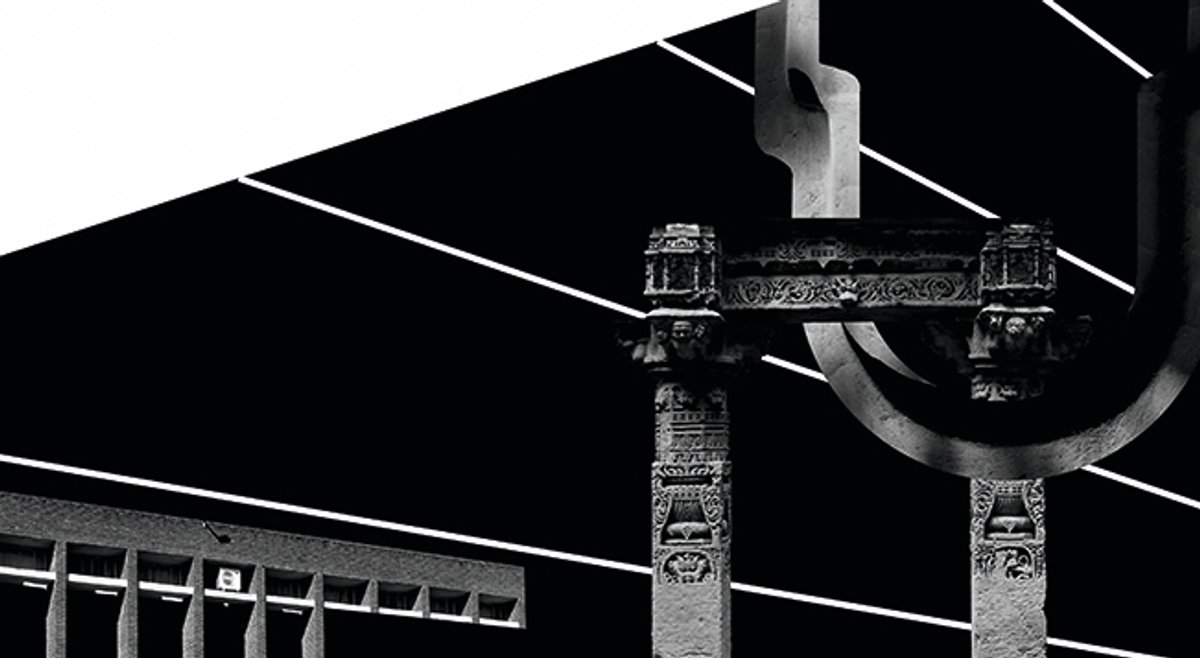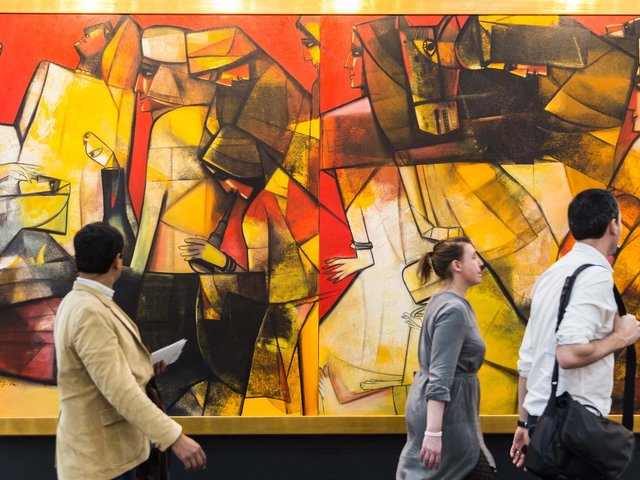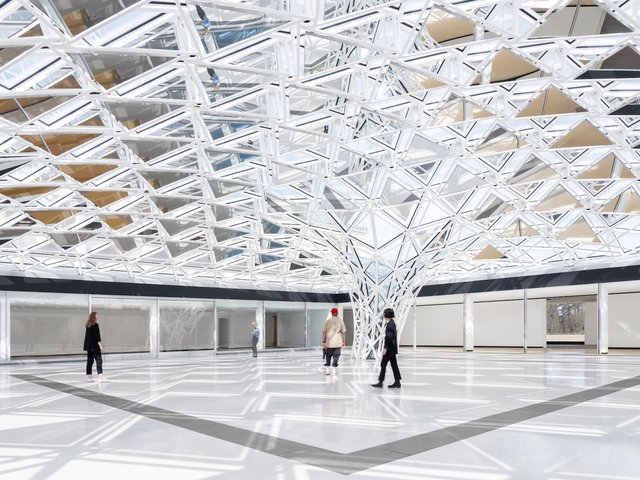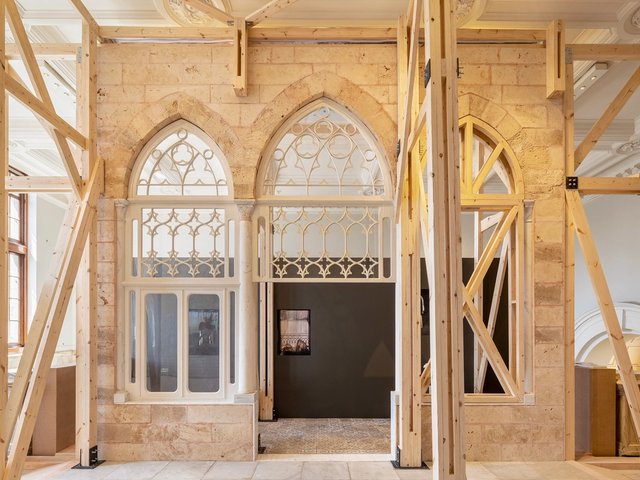“The façade is the lens through which we view a structure,” says Ayesha Singh, the Delhi-based artist invited to design the tent facade for the 16th edition of IAF, in collaboration with the art foundation Mash. Many architects, she explains, present a compelling story on a building’s surface, but leave the back barren—much like the selective and incomplete way in which a nation’s history is often understood.
Singh’s practice centres on the fragmenting and multiplying discourse around cities and their cultural heritage. Best known for her large-scale sculptural installations, she uses horizon lines to manipulate vanishing points, collapsing singular perspectives to represent multiple histories and narratives. For the IAF project, she will address the metaphorical barrenness of India’s historical narrative by identifying significant gaps in the recording of women’s contributions to its architecture.
The installation will turn IAF’s four tents—which cover an area more than 460ft wide—into a dizzying monochromatic visual field. Singh’s signature play with sight lines will interrupt and puncture architectural photographs of overlooked monuments and buildings made by five women architects and patrons, spanning from 1000AD to the present. The installation, extending to a 68ft carpeted area on the floor, will “slice, fragment and flip the historical narrative via the architectural image”, she says. Visitors will be forced to step into the perspective lines as they navigate their way across the venue, hopefully encouraging them to question the very “construction of perspectives”.

The Delhi-based Singh’s tent façade focuses on five overlooked Indian women architects and patrons, from 1000AD to the present day Photo: Tristan at PICA, courtesy of the artist
Among the women referenced is Bega Begum, best known as the first wife and chief consort of the 16th-century Mughal emperor Humayun. Typically overlooked in popular history, Empress Bega Begum commissioned and supervised the construction of Humayun’s Tomb, Delhi’s first garden tomb, completed in 1572. This famed structure not only inspired future Mughal architectural endeavours but also stands as one of the first major monuments built by the Mughals in India. The inclusion of Begum adds a further political layer to the work: in 2023, India’s National Council of Educational Research and Training (NCERT) removed significant sections of Mughal history from school textbooks under the guise of “rationalising” the syllabus.
A Le Corbusier collaborator
Other figures being spotlighted in Singh’s installation include Urmila Eulie Chowdhury, one of only two women to work on Le Corbusier’s team for the post-independence development of Chandigarh. Despite her significant contributions to the city, Chowdhury’s name is rarely recognised within architectural history. Singh also pays tribute to the late Revathi Kamath, a pioneer in sustainable mud architecture, whose innovative approach to building celebrates harmony with the environment and challenges conventional architectural paradigms.
Singh is the sixth artist to take on the IAF tent façade commission, following artists such as Thukral & Tagra in 2024 and Sameer Kulavoor in 2020. Considering the massive footfall at IAF and the sheer scale of the tent, Singh sees the façade as a powerful vehicle to explore the vast scale of religious, cultural and ideological movements across the country. For Singh, the tent façade will serve as both a homage to India’s incomplete histories and an effort to renew and expand the prescribed perspective.
Moreover, it will emphasise the nuanced ways humans engage with built environments. In earlier works, Singh has drawn from memory to reconstruct architectural forms, calling attention to how collective efforts and aspirations shape national identities. This approach extends to the IAF project, where Singh will collaborate with her long-time partner Jyothidas K.V. on a series of live activations titled Ingredients of Encounters: Dismantling Site Lines. These will include poetry readings and conversations, aiming to further visitor engagement with the space.
By emphasising the individual experience within architectural discourse, Singh brings forth the personal connections and memories tied to these spaces. This focus will extend to the afterlife of the work, as the materials from the installation will be repurposed to create waterproof and habitable structures in collaboration with Goonj, a non-profit disaster relief organisation.





